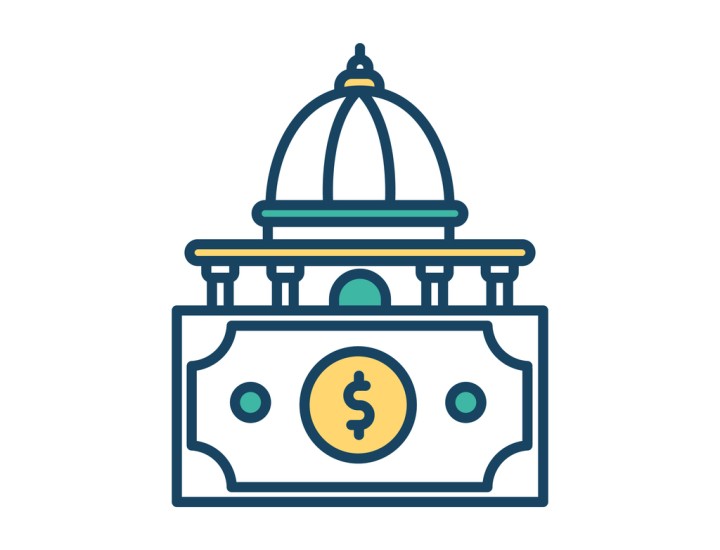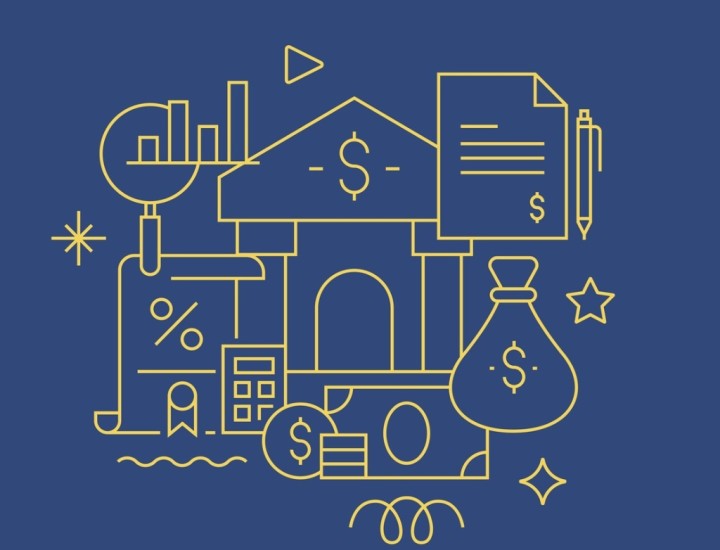A Conversation With Noah Winn-Ritzenberg, Senior Director of Public Finance at the Volcker Alliance
This commentary was originally published by the Government Finance Research Center UIC on April 9, 2025.
The Government Finance Research Center works with researchers from a variety of backgrounds to analyze the role that public finance plays in our lives. In the interviews below, we talk with experts to dig deeper into pertinent topics and get their perspective on the past, present, and future of government finance.
Q: Before we dig into the details, would you be able to summarize your thoughts about the outlook for state and local finances in coming years?
NWR: There are several threats and risks, few of which are particularly new, that each on their own could be problematic. But what’s really driving the risk right now is that they may layer on top of one another and exacerbate each other, in ways that are going to significantly increase both economic and fiscal risks for states and localities.
Q: With this kind of onslaught or problems are the states necessarily destined to face an alarming future?
NWR: States are not passive participants in determining their own future. There are steps that they can take to significantly mitigate their exposure. But if they don’t plan long-term and really confront some of these risks then they’re going to face some potentially serious issues.
Q: Let’s talk a little about the revenue side of the ledger. That seems to be problematic, isn’t it?
NWR: According to Pew, in fiscal 2024, inflation adjusted tax revenue fell in 40 states relative to the previous year. Declining state revenues are being driven by a couple of factors. Obviously, there’s likely going to be some level of federal retrenchment of support for states. Additionally, pandemic era support is winding down, which was anticipated, but on top of that the administration is attempting to claw back funding that was budgeted or even obligated already.
Q: That’s certainly worthy of concern. Do other factors come to mind?
NWR: Yes, tax cuts passed by a number of states are going to be problematic, especially if the economy falters.
Q: Is that true of all the tax cuts?
NWR: Well, some states implemented tax cuts in more responsible ways and considered the long-term impact on revenues. One prudent approach is implementing tax policy changes that are temporary, rather than permanent, and require reevaluation before being adjusted, continued or expanded.
A Volcker Alliance report on pandemic era tax reforms recommended using revenue triggers that can help limit the volatility and unpredictability associated with changes in tax policy. Specifically, we recommend a baseline revenue level, with benchmarks that mitigate the impact of tax cuts on long-term revenue and reduce volatility.
But a lot of states enacted significant tax cuts during and after the pandemic without long term revenue triggers. They made broad, permanent, and in some cases, deep tax cuts when there might have been more prudent approaches. What’s more, some made tax cuts that were structured in ways that cost revenue but didn’t necessarily spur the optimal amount of economic growth that they could have.
Q: What are states that are short on cash going to do?
NWR: You’re going to have states raising taxes, dampening economic activity further, or making austerity decisions that we saw in the Great Recession.
Q: What kind of austerity measures do you anticipate?
NWR: There’s likely going to be underinvestment in infrastructure, which is going to have economic impacts of their own. And under investment in education, which is going to have economic impacts. You know, people talk a lot about cutting corporate tax rates to attract businesses, but from conversations that I’ve had with site selection experts the presence of a well-educated skilled labor force and reliable infrastructure are much higher on their list of priorities than marginally lower tax rate.
In order to avoid some of the more painful cuts, states can build up and maintain their reserve funds.
Q: But given the politics of the situation at a time when many states have hefty rainy-day funds, won’t there be political pushback to putting more money aside?
NWR: One thing that I think states should consider, and this is something that I think the Congressional Budget Office has recommended also, is establishing dedicated cash flow reserves or mechanisms, separate from traditional rainy-day funds, to mitigate the kind of temporary but disruptive cuts and freezes we have seen coming out of the administration. They could also consider establishing other more dedicated funds for addressing specific impacts, which may be easier to explain, rather than just holding a large amount of money in a single pot that looks more and more enticing to tap into for the legislature and harder to justify to constituents.
Q: You mentioned federal retrenchment of funds that go to the states. Does that have a ripple effect beyond the actual loss of cash revenues?
NWR: With federal funding cuts coming, very likely for things like food assistance and health care, that’s going to have an impact on state finances. Shifting the cost burden to individuals for goods and services that are tax exempt will crowd out spending on taxable purchases, threatening state sales tax revenues, which make up about a third of state tax revenues and impacting local economies. Federal grant and staffing cuts will also have ripple effects across the country.
Diminished economic activity is also going to lower income and payroll taxes, it’s going to increase unemployment claims, it’s going to strain social safety nets and then potentially with some lag affect property tax revenue through mortgage defaults and declining housing markets. All of which impact not only people in their everyday lives but also strain state and local finances both on the expenditure and revenue side.
Another layer added on top of that is the trade war that’s emerging. While some protected industries like steel may see a boost from tariffs, downstream industries, consumers, and the overall economy are likely to take a decently significant hit from both higher prices and supply chain disruptions. A first quarter 2025 CFO survey showed that a third of manufacturing firms intend to reduce their hiring plans in response to and anticipation of tariffs, and that was before the administration announced its sweeping tariffs last week that sent markets into freefall. Tariffs will exacerbate many of the same economic and fiscal impacts previously mentioned.
Q: This is pretty sobering stuff. Are there any other concerns?
NWR: The possible elimination of the municipal bond tax exemption could significantly raise the cost of borrowing for localities exactly at a time when they may need to ramp up borrowing to address infrastructure deficiencies and increase resilience. Any potential credit ratings downgrades resulting from loss of confidence would compound this impact. States have a critical role to play in supporting and advocating for their constituent municipalities.
Q; Right now, at least the state’s pension plans are in really good shape, aren’t they?
NWR: State funding of public employee pensions has improved significantly over the last decade or so. But in an economic downturn or fiscal crisis, states will be tempted to reduce their pension contributions to stave off tough choices in the short-term. But the long-term costs and risks of political expediency, including to state credit ratings, are significant.
Q: Let’s not end on a negative note. Are there things states can do to mitigate these risks?
NWR: Yes. Strengthening budget forecasting, scenario planning, stress testing for both revenue and expenditures long-term is critical. And being informed by these, when designing tax policy is critical. There is a positive trend toward this kind of strategic, long-term enterprise management and governance among states. And the Volcker Alliance is committed to helping states improve on these and other fiscal practices.


